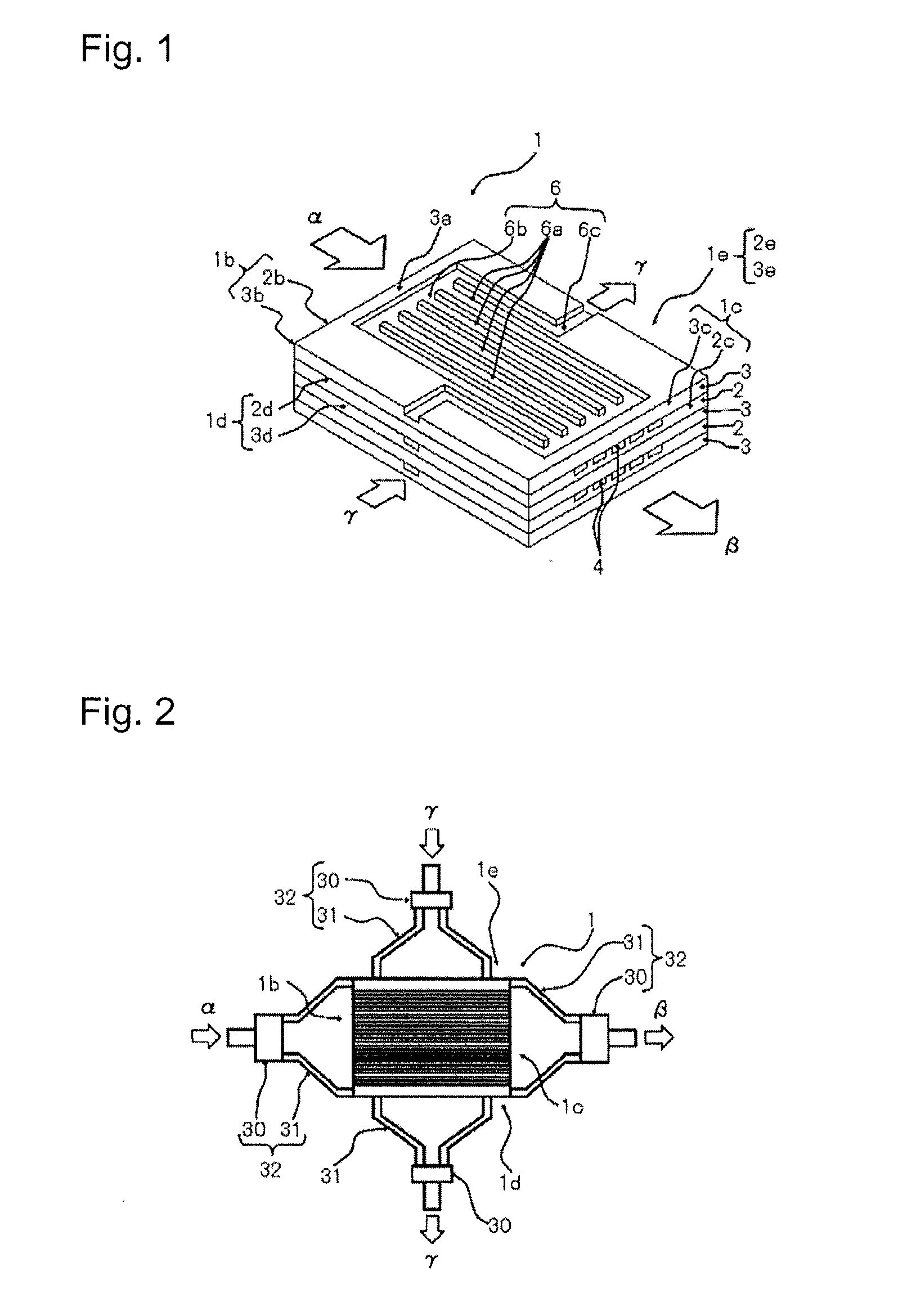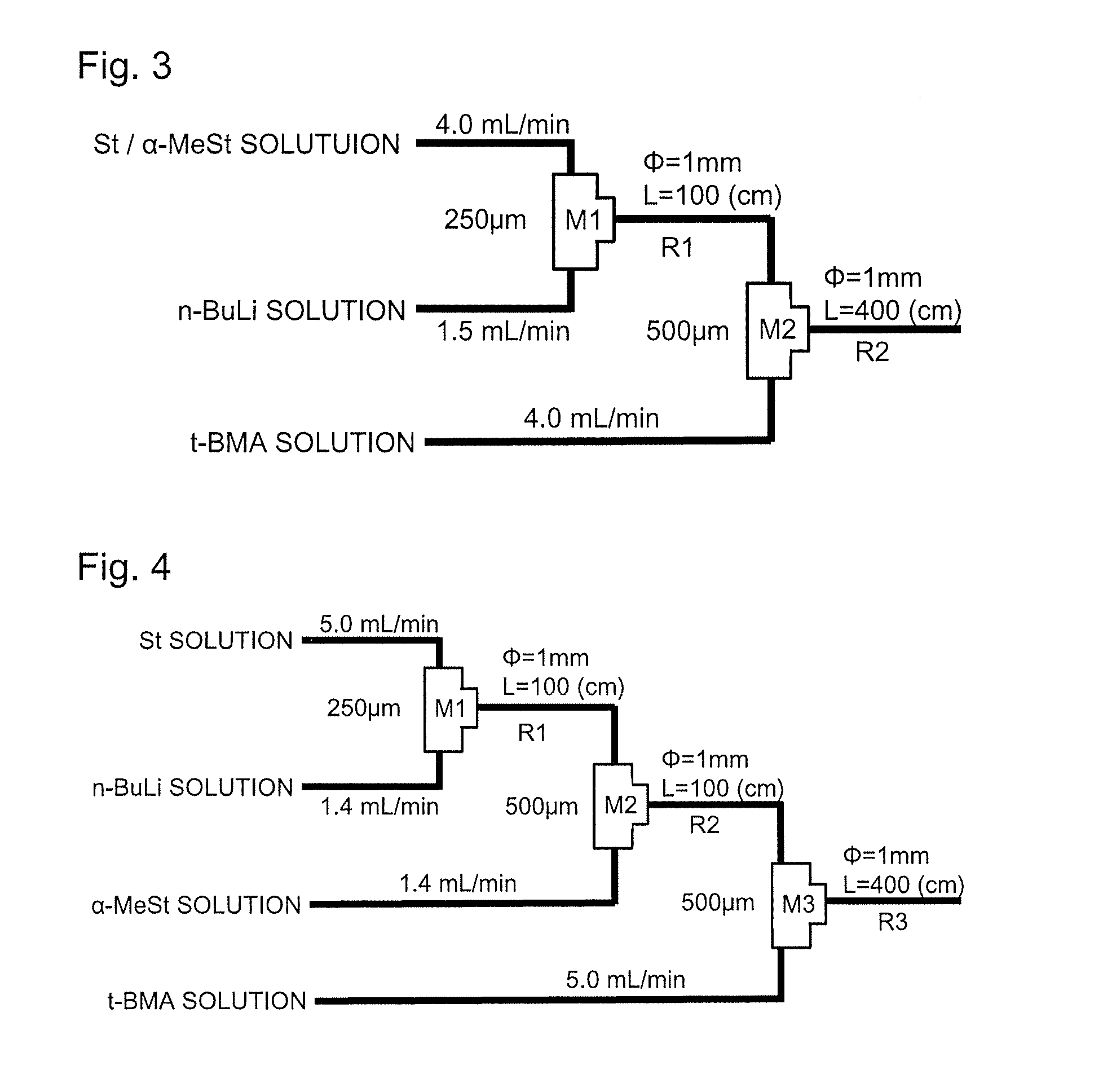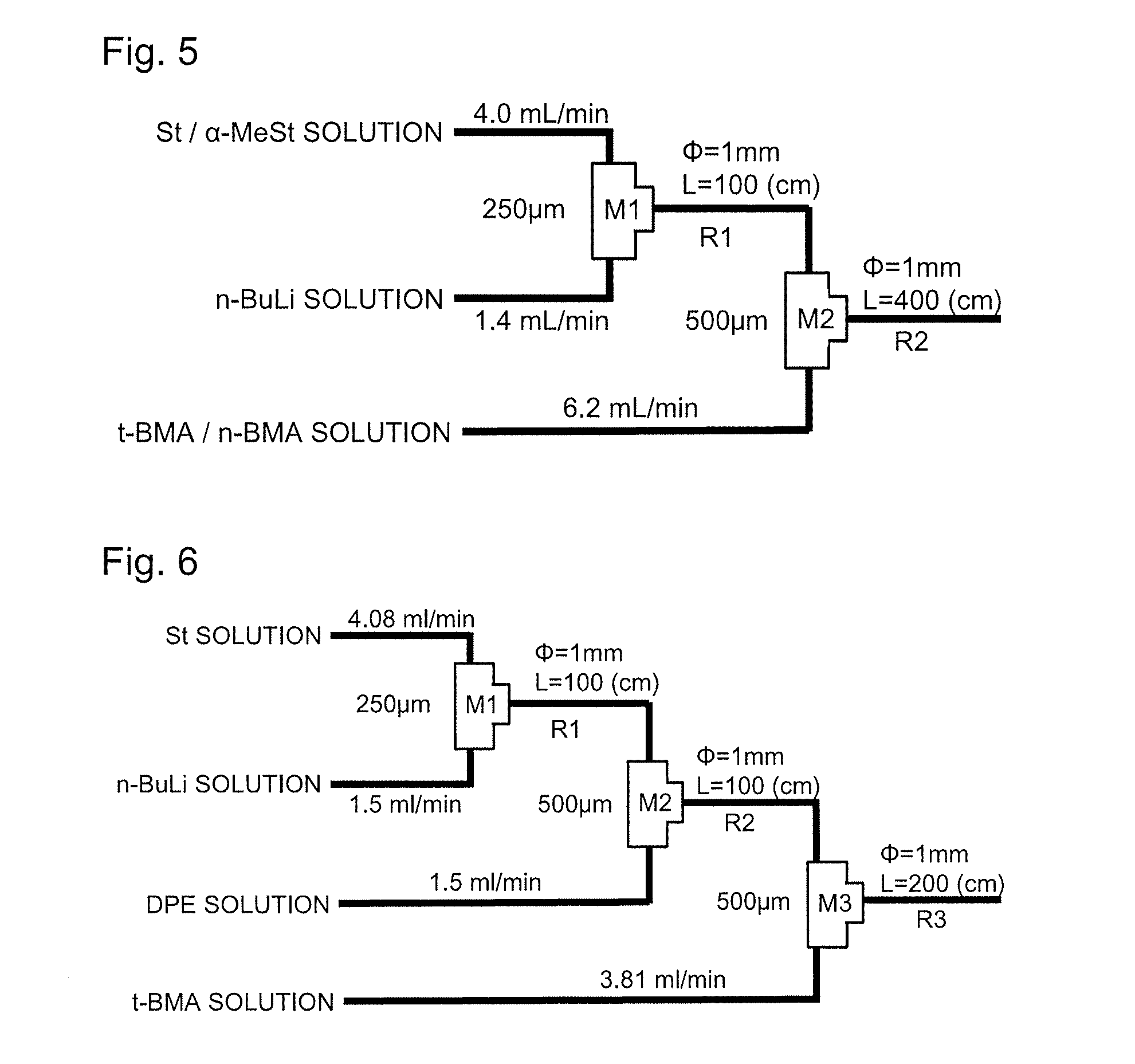Method for producing block copolymer, and block copolymer obtained using same
a technology of block copolymer and copolymer, which is applied in the direction of chemical/physical/physical-chemical microreactors, etc., can solve the problems of inability to obtain complete block copolymer, inability to coexist with styrene, and high cost of diphenylethylene, etc., to achieve efficient and smooth production, easy control of molecular weight, and narrow molecular weight distribution
- Summary
- Abstract
- Description
- Claims
- Application Information
AI Technical Summary
Benefits of technology
Problems solved by technology
Method used
Image
Examples
example 1
[0115]4 Kinds of the solutions shown below were prepared.
(1) Styrene (5.4 M) / α-Methylstyrene (0.6 M) Solution
[0116]Using a syringe, 50.6 g (55.5 mL) of styrene (hereinafter, abbreviated to “St”), 6.38 g (7.0 mL) of α-methylstyrene (hereinafter, abbreviated to “α-MeSt”), and 27.5 mL of tetrahydrofuran (hereinafter, abbreviated to “THF”) were charged into a 100 mL eggplant-shape flask purged with argon gas, and the resultant mixture was stirred to prepare 90 mL of a solution containing St at 5.4 M and α-MeSt at 0.6 M.
(2) t-Butyl Methacrylate (3.6 M) Solution
[0117]Using a syringe, 25.6 g (29.0 mL) of t-butyl methacrylate (hereinafter, abbreviated to “t-BMA”) and 21.0 mL of THF were charged into a 100 mL eggplant-shape flask purged with argon gas, and the resultant mixture was stirred to prepare 50 mL of a 3.6 M t-BMA solution.
(3) n-Butyllithium (1.2 M) Solution
[0118]Using a syringe, 16.2 mL of hexane was charged into a 100 mL eggplant-shape flask purged with argon gas, followed by cool...
example 2
[0124]Living anionic copolymerization of St / α-MeSt and t-BMA was conducted in accordance with substantially the same procedure as in Example 1 except that the t-BMA solution was fed at a rate of 6.06 mL / min. From the residual monomer content of the solution of the obtained polymer, it was found that the reaction ratio (polymer conversion) of St was 100%, the reaction ratio (polymer conversion) of α-MeSt was 98.9%, and the reaction ratio (polymer conversion) of t-BMA was 100%. Further, the obtained polymer had a number average molecular weight (Mn) of 3,250, a weight average molecular weight (Mw) of 3,970, and a distribution (Mw / Mn) of 1.23. It can be confirmed from these results that a polymer having a narrow molecular weight distribution, which is comparable to that of the polymer obtained in Comparative Example 1 using diphenylethylene, is obtained at a high reaction ratio.
example 3
[0125]Living anionic copolymerization of St / α-MeSt and t-BMA was conducted in accordance with substantially the same procedure as in Example 1 except that the t-BMA solution was fed at a rate of 8.08 mL / min. From the residual monomer content of the solution of the obtained polymer, it was found that the reaction ratio (polymer conversion) of St was 100%, the reaction ratio (polymer conversion) of α-MeSt was 98.8%, and the reaction ratio (polymer conversion) of t-BMA was 99.9%. Further, the obtained polymer had a number average molecular weight (Mn) of 3,730, a weight average molecular weight (Mw) of 4,760, and a distribution (Mw / Mn) of 1.28. It can be confirmed from these results that a polymer having a narrow molecular weight distribution, which is comparable to that of the polymer obtained in Comparative Example 1 using diphenylethylene, is obtained at a high reaction ratio.
PUM
| Property | Measurement | Unit |
|---|---|---|
| Polarity | aaaaa | aaaaa |
Abstract
Description
Claims
Application Information
 Login to View More
Login to View More - R&D
- Intellectual Property
- Life Sciences
- Materials
- Tech Scout
- Unparalleled Data Quality
- Higher Quality Content
- 60% Fewer Hallucinations
Browse by: Latest US Patents, China's latest patents, Technical Efficacy Thesaurus, Application Domain, Technology Topic, Popular Technical Reports.
© 2025 PatSnap. All rights reserved.Legal|Privacy policy|Modern Slavery Act Transparency Statement|Sitemap|About US| Contact US: help@patsnap.com



